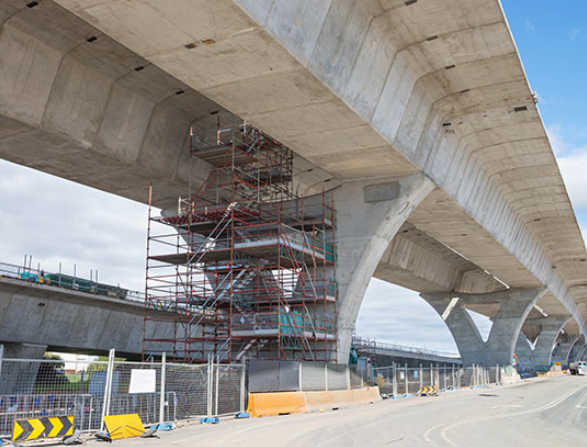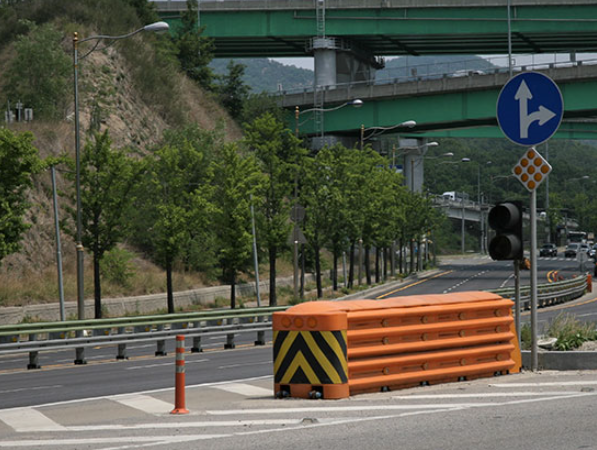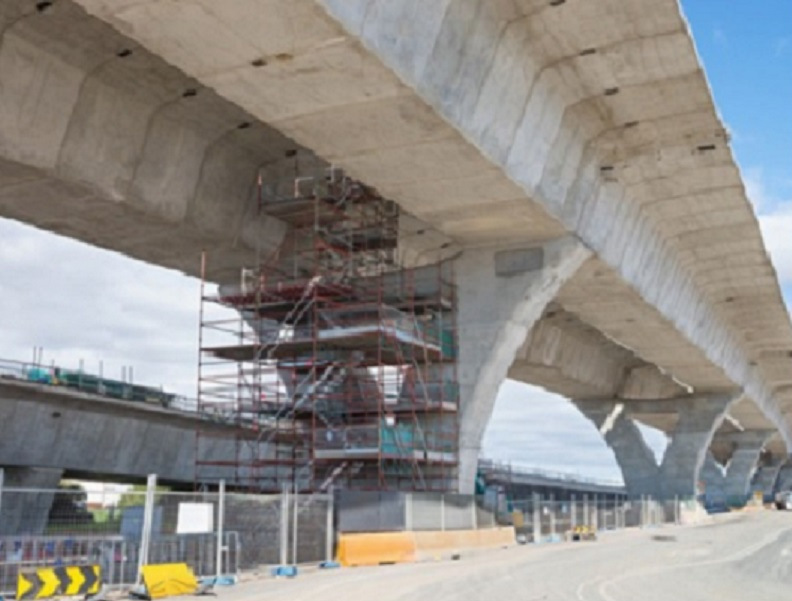By Katherine Shonesy
Alabama NewsCenter

Alabama researchers are out to improve national statistics where more than 32,000 people are killed in car accidents each year and about 2 million people are injured, according to the Centers for Disease Control and Prevention.
Researchers at the University of Alabama at Birmingham School of Engineering aim to improve those tragic statistics. UAB made two proposals to the National Cooperative Highway Research Program (NCHRP) as part of a nationwide quest for ideas to improve highway safety. NCHRP’s Innovations Deserving Exploratory Analysis (IDEA) award is given annually for projects “with potential to advance the construction, safety, maintenance and management of highway systems.”
UAB Mechanical Engineering Professor Dean Sicking, Ph.D., and Civil, Construction and Environmental Engineering Associate Professor Thomas Attard, Ph.D. submitted separate proposals for the IDEA award program. Their submissions were chosen from among nearly 50 proposals.
“It is extraordinary that two of the three winners nationally could come from one school,” said School of Engineering Dean Iwan Alexander, Ph.D., “but given the experience and dedication of the faculty involved, it is not surprising. Every day, we see work in a variety of fields which generates knowledge that promises to change the world. These two professors are very deserving of the funding and attention that their contributions to highway safety will receive. We are proud of the work they do.”
Designing a Smarter Crash Cushion
Bringing order to something as chaotic as a car crash is no small feat, but Sicking is no newcomer to highway safety innovation. He gained recognition in recent years as the inventor of the SAFER Barrier that is now used on NASCAR, Formula One and other auto racing tracks around the world. Before that, Sicking revolutionized highway safety by inventing guardrail terminals that were installed along interstates across the nation.
Crash cushions have proved effective in saving drivers, but current designs require costly and sometimes dangerous repairs.
Kevin Schrum, Ph.D., a research engineer in the UAB Mechanical Engineering Department, wrote the IDEA proposal based on his experience in conducting cost-benefit analyses on crash cushions. Sicking and Schrum recognized a growing need in the market for a high-performance crash cushion capable of conducting its own maintenance. They received an IDEA award worth $100,000 to design this high-tech crash cushion – improving on a product Sicking designed as a graduate student in the 1980s.
“Crash cushions are the devices you see on interstate exit ramps and other places where two lanes of traffic diverge around a solid barrier,” Sicking said. “They are designed to absorb the energy of a crash, so when a vehicle strikes the barrier, the individual components collapse and are destroyed.”
The devices work well for crashes, Sicking says, but it often takes days or even weeks to rebuild and install the devices after an accident – a process that costs thousands of dollars and considerable risk to workers who have to stop traffic to perform the repair.
Under Sicking’s new plan, crash cushions will be made of stronger non-sacrificial parts. The cushion will still collapse to absorb the energy of the crash, but the parts will not be destroyed. In addition, the cushion will be equipped with sensors to measure the impact speed and angle of the crash – data that will be immediately available to highway officials and other authorities. This information can be transmitted instantly when a crash occurs.
Equally important, Sicking says, is that the device can be redeployed remotely, reducing the risk of a second crash occurring before the cushion can be reinstalled.
“The cushion will be mechanized so that, once the wreck is cleared, the unit can be reset and the cushion will return to its original shape,” he said. “By doing this remotely at the flip of a switch, there is no reason to block traffic or send a repair crew to the scene.”

Diagnosing An Aging Infrastructure
Millions of miles of interstate bridges were constructed during the previous century. To the untrained eye of the passing motorist, those concrete structures may look as solid now as the day they were built. Current inspection methods, however, can detect only discrete sub-surface defects up to two centimeters deep in these aging bridges.
Aging highways and bridges may look structurally sound, but Attard says a more sophisticated technology can help inspectors detect dangerous defects.
“Once you get beyond 2 centimeters, the damage within concrete is typically defined relative to undamaged regions,” Attard said. “This limits accurate deep-surface evaluation of bridge damage, as well as the accuracy of bridge analysis and bridge ratings. Additionally, it limits the reliability of any retrofit design/preservation program.”
In an effort to see beyond those limitations, the NCHRP awarded Attard’s team $240,500 to develop an innovative nondestructive evaluation method for damaged reinforced concrete or prestressed bridge components. The research will examine bridge damage analogously to a medical diagnosis provided by an MRI or X-ray, followed by an appropriate treatment. However, just as a medical diagnosis of a broken wrist in a young person may yield a different prognosis and “retrofit plan” than a broken wrist in an older person due to different bone density, age, activity-level and overall health, an “MRI” of two bridges may lead to two very different retrofit plans, each custom-designed to optimize energy dissipation, maximize recovery, minimize risk of future injury and minimize cost.
“We are going to use an optimal multicoil design for radio frequency inductive testing, or RFIT, to discretely identify defects,” Attard said. “We feel that, because RFIT utilizes low-frequency resonant magnetic fields instead of electromagnetic fields, we may be able to dial in the necessary magnetic field waves to deeply penetrate concrete structures and resolutely identify defects. This means geometric identification of deep sub-surface defects by providing maximum resolution and penetration depth.”
As a proof-of-concept, Attard says his team plans to develop a cost/value model for aging bridge components. “Our experimental test-bed is three large reinforced concrete beams that will be damaged sequentially over a two-year period and evaluated for deep defects, such as pitting corrosion, cracks and bond-slip, using our innovative optimal multicoil RFIT approach,” he said. “We will also apply the technique to an existing bridge and design an appropriate cost-value retrofit.”




